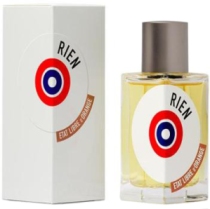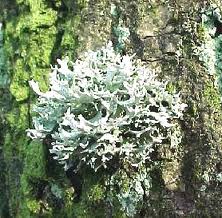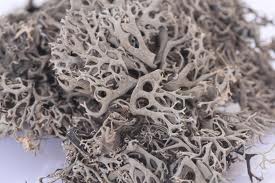A cool chick, dressed in fake leather that she’d bought at a cheap, second-hand store. By day, she worked in the industrial backrooms of a carpeting warehouse, trying to get the smell of dust and sanitized, synthetic cleaners out of her hair. With her torn fishnet stockings and combat boots, she exuded an air of toughness like the black whip she wielded at nights, in her other job, as a dominatrix at an exclusive BDSM club downtown. The clean scent of her slightly musky skin was coated with powder, the palest of pink roses, a touch of iris, and a sharp sweetness. The pale delicacy of it all contrasted with the feral meow of the raunchy cat smell that lingered under the fake leather, and with the incense that she loved to burn. On her evening breaks at the club, she would lounge nonchalantly against the wall, her long leg in its black patent, thigh-high stiletto boot crooked behind her as she restlessly flicked the whip to the side, and did her best James Dean with each long drag of her cigarette. When men asked her name, she would coldly reply, “Rien.”
Rien is a leather and aldehyde fragrance from the quirky, eccentric French niche house of État Libre d’Orange (hereinafter just “État Libre“). It is an eau de parfum created by Antoine Lie and released in 2006. The fragrance gives a nod at Robert Piguet‘s legendary Bandit, but without the latter’s famous green-black hues from galbanum. It also shares similarities to L’Artisan Parfumeur‘s Dzing! and Molinard‘s Habanita. Like all those fragrances, Rien is a love it-or-leave-it proposition. I hated it. Deeply.
État Libre describes Rien and its notes as follows:
RIEN, THE STORY…
Nothing is Everything. Do not believe what you first see… under the demureness of the name, there is the spicy savor of blackcurrant bays and the musky notes of blond suede. ‘Rien’ is a second skin perfume, a perfume that clings to the body and perseveres in the mind. Like venial sin on the verge of becoming mortal, it is irresistible and resolutely pervasive. As light as mohair and as precious as cashmere, the fragrance envelops skin with a powdered caress. It has the meticulous elegance and hypnotic beauty of a modern Dorian Gray, in a feminine/masculine version. An entrancing fragrance that leaves an unforgettable imprint. Utter charm, utterly charismatic. The vanilla/opium accord of the drydown reinforces the addiction. ‘Rien’ is an essential. A perfumer’s confession
Rien.
Incense, rose, leather, cistus [Labdanum], oakmoss, patchouli, amber, cumin, black pepper, aldehydes…
I’m a bit confused by the fact that some of the notes mentioned in État Libre’s story aren’t included in the notes. “Blackcurrant bays?” Apart from my ignorance as to what constitutes a berry’s “bay,” there is also the issue of Luckyscent listing a few additional or separate elements. For example, it lists mousse de chene (which is technically different from mere oakmoss), in addition to styrax (a vanillic resin) and iris. If Luckyscent is correct, then the complete list of notes would look more like this:
Incense, rose, leather, iris, labdanum, mousse de chene, styrax, oakmoss, patchouli, amber, cumin, black pepper, aldehydes.
Rien opens on my skin with aldehydes and a nuclear blast of black-green. For once, the aldehydes don’t translate on my skin as pure soap and foam, but rather as something fizzy, sweet, and with a wax candle undertone. They also have a salty, nose-tickling smell that is enormously similar to Alka-Seltzer tablets dropped in water.
The green note smells sharp — so much so that it almost resembles galbanum more than mere oakmoss. Yet, despite its pungent, bitter acridness, it clearly has the traditional musty, grey mineralized feel of lichen. It’s an extremely cold note that has a mineral and metallic clang to it, along with a salty quality that obviously carried over to impact the aldehydes. The grey-green moss is also infused by incense, though it is not the usual dark, black, smoky kind. This is more like the mentholated, medicinal, almost anise-like tonalities of myrrh, but without its cold, white, High Church feel. The overall combination feels as sharp as the crack of a black-and-green leather whip across raw flesh. Have you seen those old films like “Mutiny on the Bounty,” where mutineers or slaves were whipped as punishment across their backs? That’s the crack you feel here with Rien’s opening.
Some other notes stir and whimper submissively under this aggressive barrage of sharpness. There are subtle flickers of a pale, pink rose and of a slightly powdered iris hiding fearfully in the base. More defiant is the feral meow of the civet, sounding like a cat in heat as it lets off a sharp, bitter, animalic note. I’m not one of those people who always thinks civet smells like a “cat’s anus,” but something about the note in Rien strongly conjured up that pejorative term. Civet is a note that cannot be naturally harvested any longer due to animal cruelty and abuse issues, so the aroma is commonly replicated by synthetic versions. In Rien, it might be some very cheap stuff, because the civet feels not just animalic, but so sharp that it could cut you. Then again, given the rest of the fragrance, it’s undoubtedly intentional….
The most interesting parts of the fragrance to me are the leather and the mousse de chene. Let’s start with the former. There is something very synthetic about the leather, almost intentionally so, because the material smells like new, unworn, black patent shoes mixed with the cheap, plastic-y smell of fake, plastic leather, or “pleather.” As a lawyer in San Francisco, one of my areas of speciality was sexual harassment defense, and I gained some working knowledge of BDSM and sex clubs, as well as every possible kinky twist that you might imagine in a city as sexually open as San Francisco. When I wore État Libre’s Rien, all I could think about was bondage leather, whips, and rubber outfits in San Francisco (and a truly bizarre case). Here, however, the material always has a slightly powdered, dusty, rubbery, plastic, industrial undertone to it. I wouldn’t be particularly fond of the aroma, in and of itself, on the best of days, but when combined with the waxy, fizzy, nose-tickling aldehydes, the acrid, black incense, and the crack of the oakmoss, it’s really is not my cup of tea.
And let’s talk about that oakmoss. Mousse de chene is actually a specific type of oakmoss (Evernia prunastri) which is an oakmoss absolute according to The Aroma Connection blog, and, in some people’s eyes, seems to be considered the “true” oakmoss. It’s a grey lichen which grows on trees and has an intensely dank, pungent, fusty aroma that can also be salty and smell like tree bark. Still, the truth is that “real” oakmoss of any type is essentially banned out of perfume existence, so substitutes are used. There is a very interesting, detailed, and somewhat technical discussion of the different types of oakmoss on The Aroma Connection, including the various synthetic versions or additives thereto. The site also helpfully provides the following aroma description:
It should also be mentioned that a range of commercial oakmoss products exists, some offering a warm, leathery-mossy character, whilst others offer have woody, mossy – almost marine-like aspects.
Here, both types of aromas are present. The oakmoss has a sharp mossy, salty character that smells quite distinctly like the bark of a tree, but it also has a leathery quality to it. Later, it turns warmer, but the opening moments of Rien are really a whack on the head with its colder, sharper aspects that are further amplified by the black pleather and acrid smoke.
Thankfully, about forty minutes, Rien starts to soften its sharp edges, turning smoother, sweeter, and a hair less insolently hostile. There is a gentle warmth stirring deep in its depths, aided by the slow awakening of patchouli along with vanillic touches from the styrax. Unfortunately, these more positive aspects are off-set by a soft, sweet, musky smell that feels like the aroma of newly placed, industrial carpeting in an office, or rolled up carpet in a warehouse somewhere. It’s a smell that is sharp, musty, dusty, almost glue-like, but also sanitized clean. I blame it on the combination of the aldehydes with the oakmoss, along with some help perhaps from white musk. Atop this dusty, somewhat industrial, musty, clean bouquet is a sprinkling of sweet powder; it’s not quite vanillic, but it’s definitely not like iris or makeup powder either.
At the 75-minute point, Rien’s base is a mix of cloyingly sweetened, dusty oakmoss with bondage leather, rubber, that sanitized industrial aroma, and some patchouli. The whole thing is wrapped up with sharp myrrh-like incense smoke, and even sharper animalic civet. The syrupy brown sweetness now filling the oakmoss juxtaposes sharply with its more pungent, mossy, mineralized aspects. The juxtaposition grows even more contrary when you add in the synthetic, “office clean” vibe and the dominatrix’s rubbery, black leather. I can’t bear any of it.
I’m also having extremely pained flashbacks to L’Artisan‘s Dzing!, a fragrance that almost made me lose my mind with its extremely similar dusty scent mixed with synthetic, cloying sweetness. Dzing! reminded me of those cheap trinket, tourist shops you find in Tijuana where the smell of plastic toys and shoes from China mixes with dust, vanilla air freshener, clean notes, rubber, and sweetness. Both perfumes are intended to be leather fragrances but, to me, the “leather” in Dzing! smelled solely of cheap, industrial plastic accompanied by cloying, synthetic, vanillic sweetness. It’s nowhere near as bad in Rien — the aroma is more dusty pleather than hardcore, pink plastic with glue and chemical undertones — but the two fragrances share enough synthetic similarities to make me wince.
At the end of the second hour, Rien’s combination of aldehydes with plastic leather remains the dominant feature, but the oakmoss recedes a little. Slowly rising to take its place is the patchouli, resulting in a discordant dusty-musty-soapy-patchouli combination. The amber also becomes more prominent, though it never once feels like labdanum with its wonderfully nutty, rich, sometimes dirty, resinous characteristics. Instead, the amber here is just a generic, vague, muted warm glow in the base, infused with myrrh smoke, styrax’s vanillic hues, the feral animalic skank of the civet, and those godawful industrial synthetics. Is there no end to this nightmare?
The perfume continues its subtle shifts. Slowly, Rien transforms into a bouquet of clean, musky, supposedly “skin” tonalities with aldehydic underpinnings, accompanied by fruited notes from the patchouli. There is powder that feels a little like that in makeup, thanks to the orris, but it also resembles powdered vanilla. The sharpness of the synthetic civet vies with the swirl of equally sharp dark smoke, which now feels more like frankincense than bitter myrrh. And the floral elements grow more prominent.
By the start of the fourth hour, Rien is a soft blur of clean, musky, aldehydic skin infused with muted floral notes of rose and iris, as well as a fruited elements that resembles dried raspberries. The smoke and plastic leather wrap it up like a bow, creating a bouquet that calls to mind the sharp, powdery, fruited, black leather, florals and smoke of Molinard‘s Habanita eau de toilette. (A combination that resulted in my struggling enormously with Habanita as well, by the way, and which ended in me disliking it immensely.)
Rien’s undercurrent of animalic, almost urinous civet remains unabated, as do the prickly, biting synthetics in the base, but Rien has (thankfully) lost its aura of freshly cleaned, commercial carpeting. The reason may lie in the growing warmth and amber in the fragrance’s foundation, which has finally managed to diffuse some of the oakmoss-aldehyde-pleather combination’s bite. At the same time, the sillage drops, and the whole bouquet hovers just an inch above the skin. Rien is still extremely potent when smelled up close, and I suspect the synthetics are the reason why.
So, to summarize, we’ve gone from Bandit to Dzing! to Habanita. No matter how much I may dislike the fragrance, I have to give Rien credit for pulling off so many clever referential nods in a row. Rien remains in its Habanita-like phase for a few hours before reaching its last stage near the end of the seventh hour. At that point, Rien is really just powder on my skin with a slightly floral nuance and quite a bit of stale sourness. The bloody fragrance sets me free just after the tenth hour when it finally dies away. I rushed to put on some Puredistance M, so that a leather fragrance I actually enjoyed would wipe the bad taste away.
As noted earlier, Rien is one of those difficult fragrances that people either love or hate. To balance out my perspective, I thought I’d share the views of The Non-Blonde who accurately describes the fragrance as “edgy” in a review which reads, in part, as follows:
It’s dirty, animalic, leathery, and smoky. There’s a hint of hot asphalt and burnt rubber, the kind you get when notes of black leather, cistus, and cumin come together. But Rien is also directly connected to Robert Piguet’s Bandit, not just in the smoke, leather and uncompromising oakmoss, but also in the softening that happens when the fragrance unfolds and gives a peek at its floral heart (more apparent in Bandit’s extrait concentration).
I used to think of Rien as very butch. I’m not so sure nowadays, though it is completely gender neutral. Rien is urban, has a distinct and deliberate synthetic twist– rubber, smoke, and some metallic parts, but also very human and warm. Wearing Rien is like taking a whiff of skin warmed under the biker’s leather jacket. […]
Rien can be downright dangerous in large amounts. I’ve noticed it the very first time I tried it and I maintain this view to this day. It’s one of my favorite perfumes from ELdO, but its non-perfuminess and the medicinal quality it takes when sprayed lavishly can be a major turn-off for those who don’t appreciate its style and heavy dusty leather boots.
I think we detect very much the same thing, particularly as Rien does have a whiff of warm skin under a biker’s leather jacket, in addition to ties with Bandit and the “deliberate synthetic twist” that she noted. I may have different terms and aroma sensations for the synthetic parts, since Rien was more sanitized, industrial office carpeting on my skin than asphalt, but the synthetic and urban feel is very much the same. Where we part ways is that she happens to think Rien is “daring and seductive,” while I simply hate it. Profoundly. And, no, I did not apply a lot. It doesn’t take much to be deluged by Rien’s abrasively acrid, synthetic, extremely sharp weirdness.
People’s assessment of Rien on Fragrantica is generally very consistent in terms of how the fragrance manifests itself on people’s skin, but there is a big split as to whether people actually like the final result. Some consider Rien to be a “masterpiece” precisely because of its difficult notes. Others found it to be utterly unbearable. Some examples of the range in perspective:
- it’s suede and little else. Smells like a department store leather jacket area. Also has a nice hint of industrial carpet. Ever walk into a new office? Yep, that’s what I’m smelling. Not something I’d want to wear. I don’t smell anything animalic or balmy or like incense or wood. JUST ALDEHYDES.
- Truly the bizarro spiritual successor of Magie Noire and Aromatics Elixir! It smells yellow, pissy, leathery, turpentine-like, but also like patchouli and clean earth. At times it smells like a corrupted Chanel No. 5, with muted and expensive-smelling florals. A masterpiece with unbeatable strength and longevity, great in hot or cold weather, and devastatingly sexy on men and women alike. If you want to project a certain fuck-off image then you must have it. Vastly superior to the more timid Bandit, I must say.
- All I smell is brand-new snow tires in a garage. [¶] And I can’t scrub it off. Must be those 60,000+ mile steel-belted tire models. I just might have to wrap my wrist in a towel and duct tape it up…so that I might get to sleep tonight.
- strong aldehydes, remining me of grandmas classical perfumes, and the heavy leather scent. There is also a strong animalistic note and the animalistic and oakmoss notes clash with something industrial, plasticky.
- I’ve read quite a few of the reviews here and mostly I see negative remarks. All I have to say is – ARE YOU PEOPLE CRAZY? This is one of the most magnificent perfumes I have ever smelled! And believe me I have smelled (and owned) a lot of great perfumes. Chanel’s Cuir de Russie, Guerlain’s Mitsouko (which is my most favorite scent ever!), L’Heure Bleue ( some say old-fashioned, I say classic) -I could go on and on, but I won’t. [¶] Anyway, my point is I would put Rien in the same line up as any of the greats. It is a masterpiece of perfumery. And this is said by a 56 year old woman, who only a couple of years ago was afraid to go out of her Guerlain, Chanel, Dior comfort zone.
There is the same sharp split at Basenotes. The negative reviews talk about such things as how Rien is “mainly a piercing, industrial note like glue, solvent or hot light bulbs. A woody-spice note in an quirky mutant, sci-fi vein. Hot plastic, volatile glue… really not my scene.” The positive ones rave about how Rien is a challenging, strange beauty that has ties to everything from Habanita, Bandit, and Dzing!, to such famously skanky or urinous fragrances as Kouros and Bal à Versailles. On both sites, I get the impression that men generally seem to outnumber the women in terms of loving Rien, so I’d definitely not worry about the fragrance being very feminine in nature.
How you feel about Rien may depend on how you view certain notes. If you’re someone who is ambivalent about Bandit, please be aware that the leather here is much more intense, not as smooth, and is significantly more synthetic or industrial in feel. If you dislike aldehydes, industrial notes, black rubber, synthetic plastic aromas, incredibly sharp civet, urinous elements, and/or super mineralized, dusty, pungent oakmoss, then stay away. On the other hand, however, if you’re someone who loves oakmoss fragrances that are very animalic, skanky, aldehydic or dusty, then I’d definitely recommend you giving Rien a test sniff. (But do not blind buy!) If you go one step further and genuflect before the altar of Bandit, Habanita, or Kouros, then Rien should absolutely be your next stop. I’m sure you’ll enjoy cracking that whip to the feral yowls of the civet!










